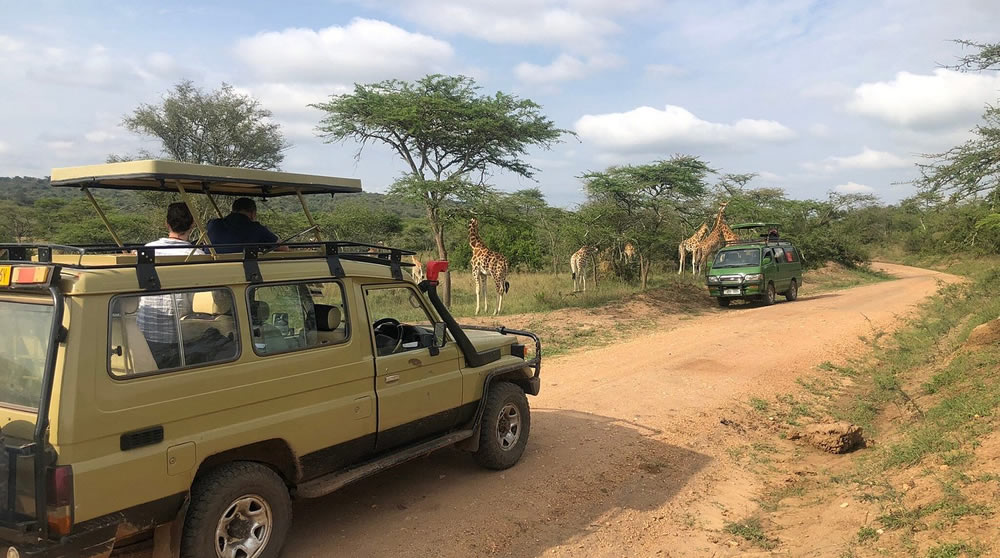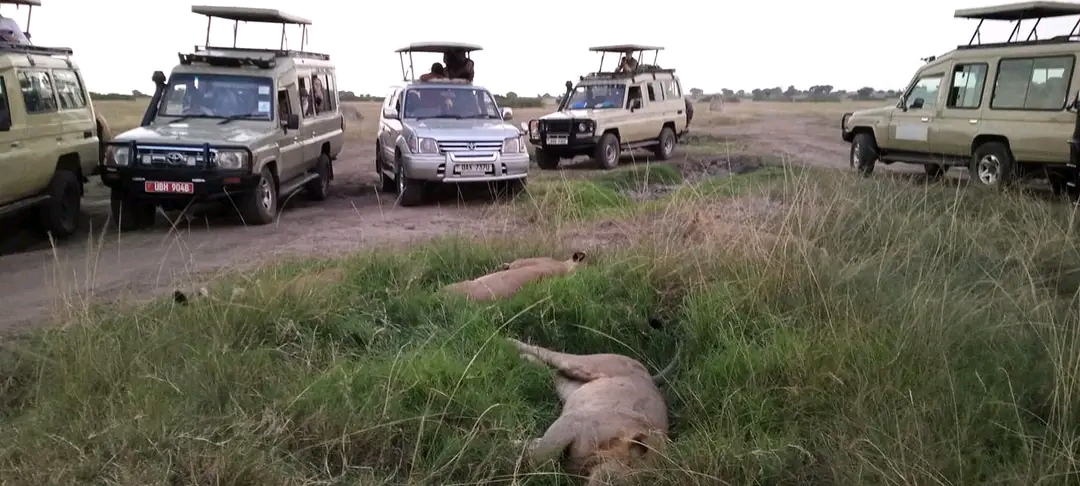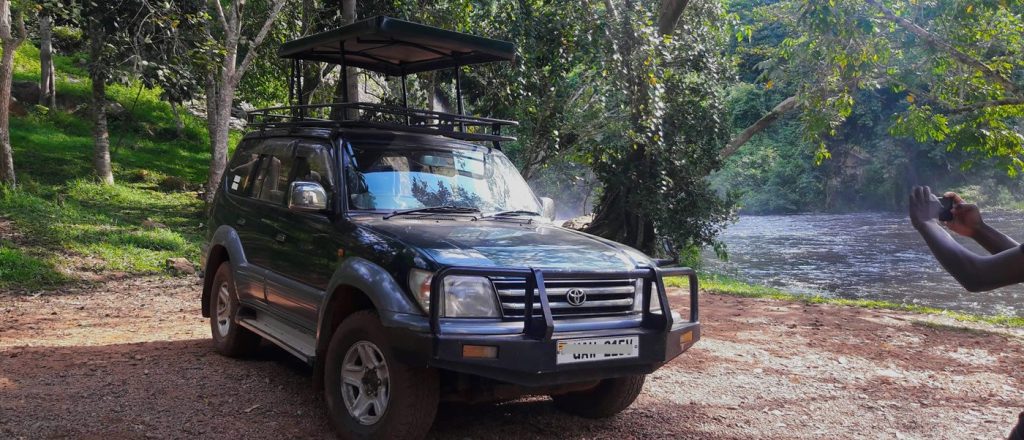The rugged landscapes of Uganda, from its potholed urban streets to remote rural areas with challenging terrain, have made 4×4 cars an essential mode of transportation in the country. These four-wheel drive vehicles have transcended being mere utility machines to become status symbols, vital tools for economic development, and enablers of tourism across Uganda’s diverse geography.
Historical Context
The relationship between Uganda and 4×4 cars dates back to the colonial era when British administrators used Land Rovers to navigate the difficult terrain. Post-independence, these vehicles continued to define mobility across Uganda’s challenging landscapes.
During the economic hardships of the 1970s and 1980s, many vehicles deteriorated, but the sturdier 4x4s often outlasted other options. The economic liberalization of the 1990s saw a significant influx of Japanese used vehicles, including various 4×4 models that remain popular today.
Popular 4×4 Models in Uganda

Toyota Land Cruiser
The Land Cruiser reigns supreme in Uganda’s 4×4 market. Its legendary durability has made it the preferred choice for government officials, NGOs, wealthy individuals, and safari companies. The 70-series workhorse variants and the more luxurious Prado and 200-series are commonly seen throughout Uganda.
Toyota Hilux
This pickup combines utility with four-wheel drive capability, making it extremely popular among businesses and farmers. Its cargo capacity and off-road capability create a versatile vehicle suited to Uganda’s mixed infrastructure.
Mitsubishi Pajero
A prominent competitor to Toyota’s dominance, the Pajero offers a good balance of comfort and capability at a slightly lower price point than equivalent Land Cruisers.
Isuzu D-Max
This durable pickup has gained significant market share due to its reasonable price, fuel efficiency, and robust construction.
Land Rover/Range Rover
Though less common than Japanese alternatives, these British vehicles maintain a presence, particularly among wealthy urbanites and some safari companies honoring tradition.
Uganda Car Rental Deal offers affordable and reliable 4×4 car rental in Uganda catering for all types of travelers including solo tourists, couples, families or small groups looking to explore the rugged landscapes and remote regions. Contact us today to reserve your rental by simply sending an email to info@ugandacarrentaldeal.com or calling us on +256-779232316
Economic Aspects of 4×4 Ownership
Import Dynamics
The majority of 4×4 cars in Uganda are imported as used vehicles from Japan, Dubai, and increasingly from South Africa and Europe. The pricing structure includes:
- Import duties (approximately 25% of vehicle value)
- Value-added tax (18%)
- Environmental levy
- Registration fees
These taxes can nearly double the original vehicle cost, making even used 4x4s relatively expensive investments.
Maintenance Economy
4×4 cars in Uganda have created a thriving maintenance economy. Specialized mechanics can be found in Kampala’s Kisekka Market and Katwe areas, with parts dealers importing components from Dubai, Japan, and China.
The prevalence of Toyota vehicles has led to a robust knowledge base for maintenance, with many mechanics specializing in Land Cruiser and Hilux repairs. This expertise extends to ingenious adaptations and repairs that keep vehicles running beyond their expected lifespan.
4x4s and Ugandan Tourism

Tourism represents one of Uganda’s fastest-growing economic sectors, with 4×4 cars playing a critical role. Uganda car rental and safari companies typically operate fleets of modified Land Cruisers or similar vehicles with:
- Pop-up roofs for wildlife viewing
- Enhanced suspension systems
- Long-range fuel tanks
- Rooftop tents for self drive camping trips
- Communication equipment for remote areas
These specialized vehicles navigate the challenging terrain of national parks like Bwindi Impenetrable Forest (home to mountain gorillas) and Kidepo Valley, where standard vehicles would fail.
Challenges and Adaptations
Fuel Costs
With fuel prices relatively high compared to average incomes, 4×4 ownership comes with significant operational costs. Many owners have adapted by:
- Converting petrol engines to LPG systems
- Installing auxiliary fuel tanks
- Modifying vehicles for better fuel efficiency
Spare Parts
Original parts can be prohibitively expensive, leading to:
- A thriving market for used parts
- Locally fabricated alternatives
- Adapting parts from different models to work together
Environmental Considerations
Many older 4x4s in Uganda have poor emissions standards, contributing to air quality issues in urban areas. Some initiatives are promoting:
- Regular vehicle maintenance to reduce emissions
- Gradual transition to cleaner fuel standards
- Importation restrictions on older vehicles
The Future of 4x4s in Uganda
As Uganda continues developing, several trends are emerging:
Electric and Hybrid 4x4s
While still rare, there’s growing interest in electric and hybrid 4×4 options. Companies like Kiira Motors are exploring locally manufactured electric vehicle options that could eventually include 4×4 capabilities.
Infrastructure Development
As road infrastructure improves, the absolute necessity of 4×4 capabilities may diminish in some areas, potentially shifting market preferences toward more economical vehicles for urban use while maintaining 4x4s for specific applications.
Local Assembly
Efforts to establish vehicle assembly operations in Uganda may eventually reduce the cost of 4×4 vehicles while creating local employment opportunities.
The 4×4 car in Uganda represents far more than just a mode of transportation—it’s an economic enabler, a symbol of status, and a practical necessity for navigating diverse landscapes. While facing challenges of cost and environmental impact, these vehicles continue to adapt to Uganda’s unique context, evolving alongside the country’s development. As infrastructure improves and new technologies emerge, 4×4 vehicles will likely remain a defining feature of Ugandan mobility, even as their forms and functions continue to evolve.
Bryan Muhoozi


